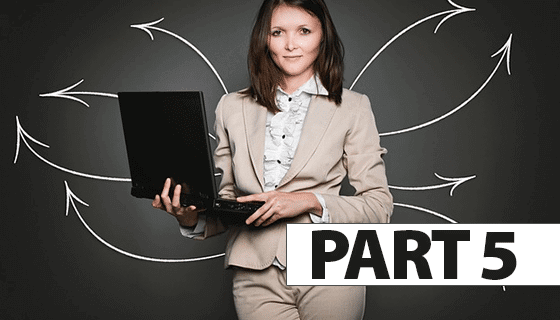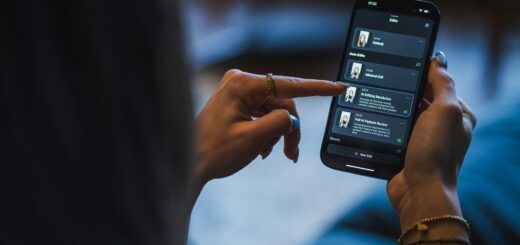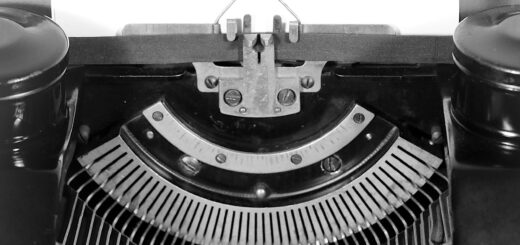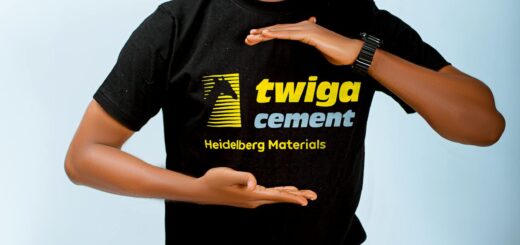10 Ways To Effectively Use The Most Powerful Word In Your Marketing
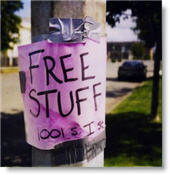 The word ‘Free’ has proven over and over again to be the strongest, most important word in marketing anything and yet few people make the most of it. I’ve never seen anyone overuse this word in a mailshot and yet no word, when used correctly, gets more attention. I recommend using Free at every opportunity. In headlines, on envelope ‘teaser’ copy, in coupons or order forms, brochures, in fact everywhere you use copy to make a sale.
The word ‘Free’ has proven over and over again to be the strongest, most important word in marketing anything and yet few people make the most of it. I’ve never seen anyone overuse this word in a mailshot and yet no word, when used correctly, gets more attention. I recommend using Free at every opportunity. In headlines, on envelope ‘teaser’ copy, in coupons or order forms, brochures, in fact everywhere you use copy to make a sale.
This word is so powerful and yet so underused. Here are 10 examples of where Free can boost your sales to give you examples of how to incorporate this in a sales letter…
One – Free Trial Request
This is an effective offer and has stood the test of time. If you look at it from the customer’s viewpoint, they are being asked to send for a product that could be of dubious quality by an unknown company, who could be running a scam. Offering the product on a free trial basis breaks down this resistance and increases sales.
Very often, you can double your response by offering a free trial rather than asking for payment with the order. Of course, this can lead to the hassle of chasing-up people who haven’t paid.
A way round this is to ask for the payment but promise not to cash their cheque until after a trial period has lapsed. This does mean that you have to file all the cheques by date and only cash those after the trial time has elapsed, or if the customer returns the product in time, send their cheque back to them. It is a lot of extra hassle but it can be worth it for the increased response.
Here’s an effective way to present this:
“Use this amazing air filter for 30 days at our risk, not yours. We won’t cash your cheque or charge your credit card until 31 days after you’ve received it. If you are not pleased with the product, simply return it and we’ll send back your uncashed cheque.”
You could also tell the customer to send a post-dated cheque for 31 days time. The problem with this is that the customer will think you’ll take 30 days to deliver it. So you will have to tell them to post-date it 60 days and that they will receive their order within 2 weeks.
The length of the free trial offer depends on the type of product you are selling. Up to 14 days is adequate for most books and merchandise, but if your product is more complicated such as computer software or a home study course, then you will need to offer 30 days.
Using free trials, you will get a higher percentage of returns (refunds); this can increase from the usual 6% to 10 – 25%. But, if your sales more than double, it can be well worth the extra handling. Test and see.
For example, you make 100 sales at £50 and get 6% refunds. That leaves you with £4,700 in sales. Or, you make 200 sales and get a massive 25% refunds. This leaves you with £7,500 sales. Which would you rather have?
Two – Free Sample
If your product can be sampled then I highly recommend that you allow people to do so freely, it will do wonders to boost your sales. Ted Nicholas often offered a sample form in mailshots selling his books of forms.
Three – Free Gifts
Including a free bonus in your sales pitch is the most powerful way to increase the sales of your product. The free product must be highly appealing. A good question to answer before you choose a free gift is: Would the prospect be willing to buy it if it wasn’t free? Always quantify the worth of the gift e.g.“And receive a superb pair of dressing salon scissors, worth £19.95, absolutely free!”
Once you have a profitable sales package that includes a free gift, it’s always a good idea to test new free gifts to see if you can beat your current winner.
Products that have proven to be outstanding free bonuses, include special reports; books (best-selling, well-known, or on a relevant topic);
• CD’s (use a video if your product is very visual)
• Software (you could sell an advanced version of your free software and have many takers)
• Calculators
• Newsletter (a well-written newsletter containing valuable information makes an excellent communication tool and increases customer loyalty)
• Maps (wall maps or atlases are very useful and if your product is travel related, a map is an ideal gift)
• Swiss army knife (a pocket knife engraved with the name of the buyer increased sales by 30% for a client of Ted Nicholas who sold $2,000 software products)
• Gold coin
• Beer mug
• T-shirt
• Baseball caps (with a logo or attractive design)
• Bring one guest free (you can enhance attendance at any event or seminar by offering to allow the paying participant to bring any guest they wish)
Good sources for many free gifts are companies that sell premiums and advertising specialities, as well as publishers. Look in your Yellow Pages as a place to start. Almost everyone enjoys free gifts and they can be a great way to boost sales.
Four – Free Bonus for Prompt Response
An excellent sales closing technique is to offer a free gift to those who respond immediately. Here is one effective way to present the concept:
Free Bonus For Early Birds
If you respond within by 30th November (a specific date is more
effective than saying ‘within 10 days’) we will send you
absolutely free a valuable special report that will…
Five – Free Service
Ted Nicholas formerly owned a business called The Company Corporation that provided entrepreneurs with a cost-effective way of incorporating their company without a lawyer. One way he used to offer a free service to customers whilst also increasing their commitment to him, was to offer free name reservation before they incorporated.
If you can offer a free service in your business that both helps the customer whilst increasing their commitment to you, it can be an effective marketing tool.
Six – Free Money
Stuart Goldsmith has used free money in his mailings to attract attention. He did a two-step mailing to generate a list for theInner Circle, by advertising a strategy he developed for doubling your way to a million pounds. Basically you start with one penny (which you have found) and double this to two pence, then double this to four pence etc., all the way up to a million pounds and there are surprisingly only 28 steps to this.
He offered this strategy as a free report in press adverts. He posted out the reports and then followed up two weeks later with hisInner Circlemailshot with a penny piece attached to it, saying: ‘Have you found your first penny yet? If not here’s one to get you started’. This generated about a 4% response.
You can also use free money to encourage people to open the envelope, an almost irresistible teaser on the envelope is something like:
“Free money enclosed… please open at once!”
There is one snag with this and that is, if you only enclose a few pennies the reader will feel deceived and not order. Gary Halbert used to send a dollar bill with his letters (for high-ticket items). His opener was “I’ve attached a dollar bill to this letter for two reasons. One, I wanted to get your attention and two I want you to read this letter through to the finish…”
You could try a high value, but worthless foreign note, but your opener would have to be relevant to your product, such as: “Have you noticed how money is not worth as much as it used to be? Take the 1,000,000 Mark note I have attached to this letter. Way back in 1936, this would have bought you….”
Naturally this spiel would have to lead smoothly into your product (index linked investment funds, for example.)
Seven – Three Free Gifts Inside
You can use this teaser phrase on the outside of the envelope to encourage the receiver to open and read, which is 90% of the battle.
Of course, if you use this on the outside of the envelope you must offer three free gifts. Never try and trick somebody into opening the envelope in this way; if the contents do not meet the promise made on the envelope they will stop reading. You will also turn people off from doing business with you at that point and probably in the future as well.
Eight – Send for Free Information
Offer a free booklet that is a taster of your main product. To attract attention this way, the copy will still need to be powerful and the benefits offered appealing. Valuable free information is often a terrific inducement to contact you. Ted Nicholas advertised a booklet version of his book ‘Magic Words That Bring You Riches’ and then followed this up with a mailshot selling the whole book.
When you offer to send free information, also add these words: “Without obligation. No salesman will call.” Many people are otherwise put off sending for information because they think pushy salespeople will then phone them or call at their house. These words reassure them that this won’t happen.
Nine – Buy One, Get One Free
The offer you create is very important. Changing an offer can often improve response dramatically. The same offer worded in a different way can make a significant difference. For example, ‘buy one, get one free’ pulls better than ‘50% off,’ and ‘two for the price of one’ even though all three are identical offers.
Ten – Free Lesson
If you are offering a course, then you might like to offer the first lesson free. You will get a lot more takers to try your course as prospects feel more comfortable that the product is what they want without having to make a long term commitment.
When Stuart Goldsmith first began writing his monthly newsletter, he offered the first 6 issues free. All the customer had to do was to fill out a standing order form that would be sent to their bank in six months (6 issues) time, unless they cancelled; the yearly subscription rate of £98 would then be debited from their account.
It was a great success. One important reason for doing it this way is that you must build a rapport with your subscribers and it takes a few months to do this.
Two things were in his favour, firstly the product was excellent (very important this) and secondly the minority who may have considered cancelling, would forget or not bother to cancel. You see, people’s inertia can act in your favour!


